An overview of some key established and emerging innovation concepts for leaders
By Gaia Grant
Part two of this innovation guide will outline a few key terms and concepts regarding innovation methodologies, processes and focus, which can be helpful to understand when navigating innovation.
Innovation Methodologies: Lean + Agile
About the terms. ‘Lean’ and ‘Agile’ are principles-based approaches to new product development which focus on rapid experimentation rather than elaborate planning.
Lean innovation involves identifying customer feedback early, based on the development of a ‘minimum viable product’ prototype, it is believed that development can be targeted and waste can be minimized.
Agile is a contrarian approach to innovation management that prioritizes simplicity, rapid iteration, and validated learning. Agile Innovation builds on these lessons and focuses on an execution, not control, based approach to generating new business offerings.
Why you need to know. The Lean and Agile approaches provide managers with simple and effective tools to leverage cheap resources and technology and rapidly test and validate ideas.
Innovation processes: Design Thinking + SID
About the terms. A few processes have been established that aim to identify the key modes required for innovation, and to reveal how to make the journey from imagination to implementation.
Design thinking is a relatively recently popularized approach to the innovation process that puts the client at the centre of a solution through a ‘human-centric’ focus and emphasizes the need for prototyping. The process provides an ideal to work towards, using evidence-based decision making to deliberately circumvent the status quo.
“Design thinking is a process for creative problem solving.” – IDEO
Strategies for Innovative Development (SID) is a model that focuses on identifying the cultural foundations along with the mindset and creative thinking skills that need to be utilized at each phase of the innovation process. The SID model draws on Creative Problem Solving (CPS) and design thinking tools for effective innovation development.
Why you need to know. These processes enable innovators to combine human needs and relevant business factors for effective creative problem solving. By embedding and reinforcing these processes in the organization, everyone develops the competencies and the opportunities to solve challenges creatively.
Innovation focus: Open + Closed
About the terms. There has been a shift from the idea that innovation is competitive and new ideas should be kept secret, to the realization that more challenges can be solved through open collaboration.
Closed innovation describes the traditional approach whereby all ideas and resources are kept internal and proprietary.
Open innovation practices seek to leverage both internal and external ideas, alternative channels to market, and shared resources to create a compounding effect across industries. Tesla’s shared patents are a great example.
Why you need to know. There has been a shift to open innovation and the ‘sharing economy’, which have the potential to become a means for creating more just and equitable ways of innovating. More open approaches have been found to be linked with high employee motivation and engagement.
Want to learn more?
Visit the link below to download a complimentary WHITE PAPER containing our independent research on how leaders can build a sustainable innovation culture.
Whitepaper contents:
- Leadership traits that embody ambidextrous innovation.
- How to identify and balance key innovation paradoxes within your organization.
- Best practice implementation strategies to develop a sustainable innovation culture.
Download now
To find more resources on recognizing, establishing and leading an innovation culture in an organization click here.

Gaia Grant (PhD) is a lecturer and researcher at the University of Sydney Business School in the Discipline of Strategy, Innovation, and Entrepreneurship, focusing on research into innovation paradoxes and ambidextrous leadership. Gaia is also a Director of Tirian Innovative Solutions, & the co-author (with Andrew Grant) of a number of books including ‘The Innovation Race’, and “Who Killed Creativity?”.

Gaia Grant (PhD) is a lecturer and researcher at the University of Sydney Business School in the Discipline of Strategy, Innovation, and Entrepreneurship, focusing on research into innovation paradoxes and ambidextrous leadership. Gaia is also a Director of Tirian Innovative Solutions, & the co-author (with Andrew Grant) of a number of books including ‘The Innovation Race’, and “Who Killed Creativity?”.

Andrew Grant is the Director of Tirian Innovative Solutions, and co-author (with Dr Gaia Grant) of a number of books including ‘The Innovation Race’, and “Who Killed Creativity?”.


